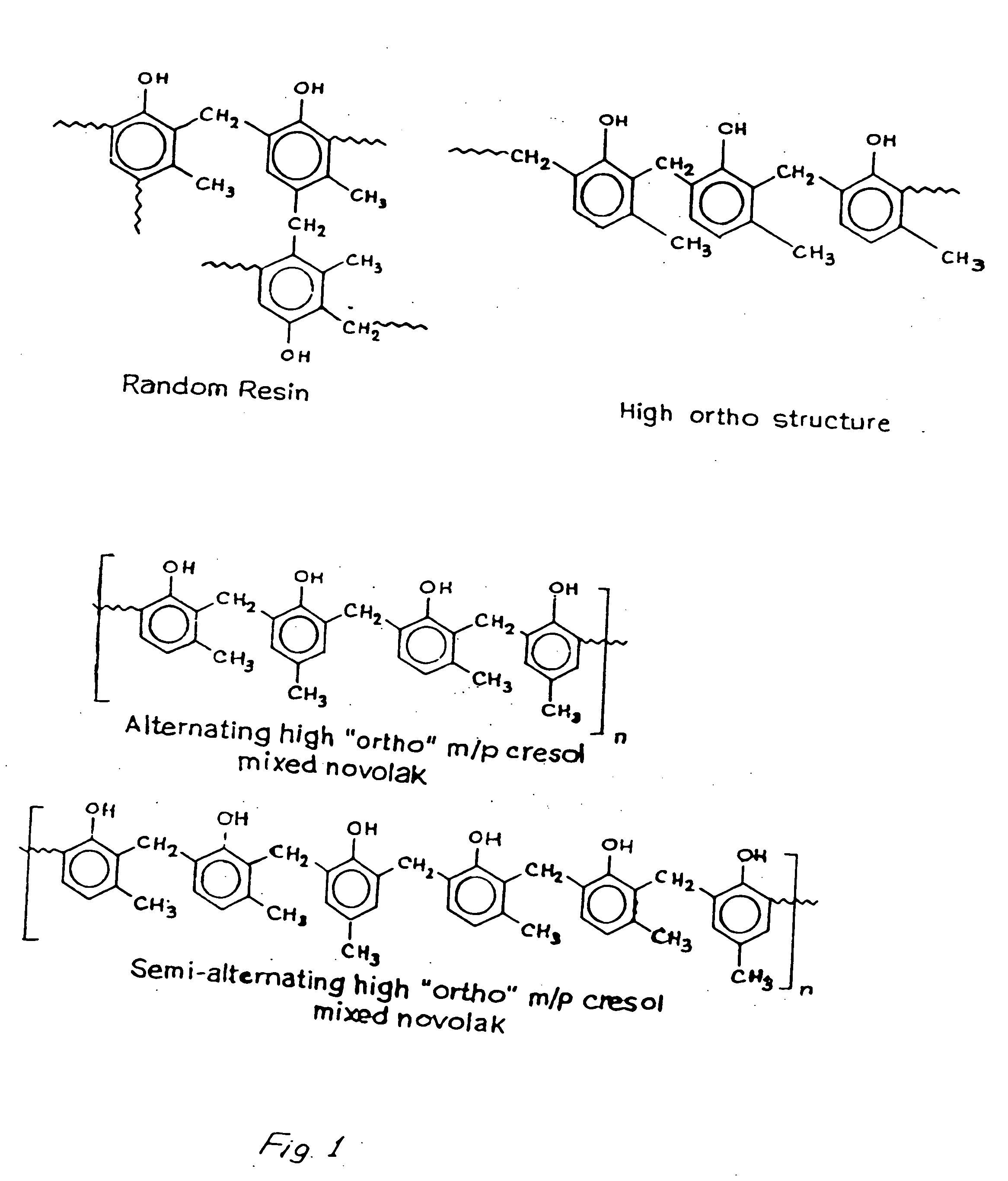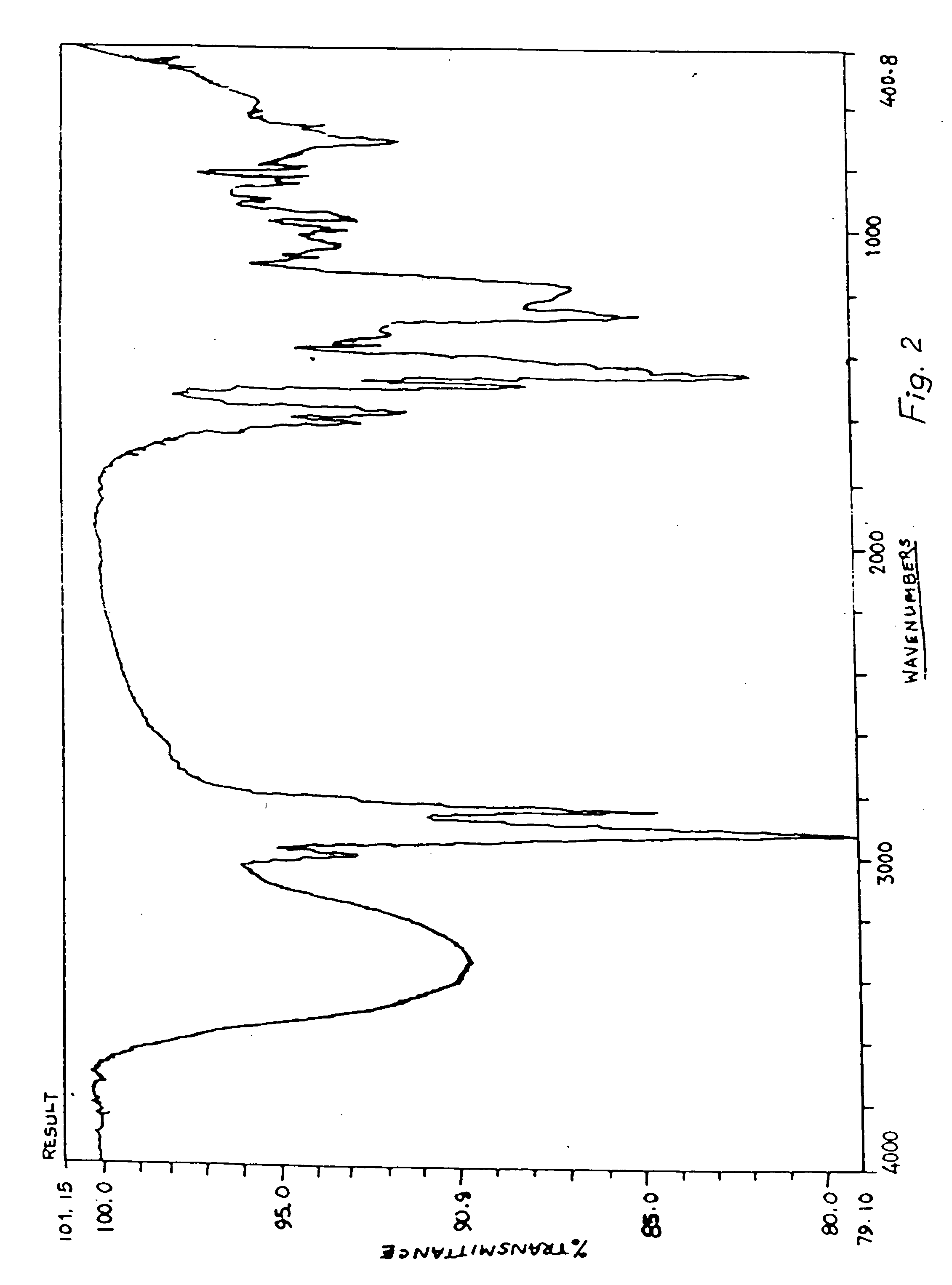"High ortho" novolak copolymers and composition thereof
a technology of copolymer and novolak, applied in the direction of instruments, photosensitive materials, auxillary/base layers of photosensitive materials, etc., can solve the problems of environmental pollution, polymer cannot be tailored to desired composition, and process is not lethal
- Summary
- Abstract
- Description
- Claims
- Application Information
AI Technical Summary
Benefits of technology
Problems solved by technology
Method used
Image
Examples
working examples
[0038] Example on Preparation of Alternating Novolac Resin
[0039] CNSL based monomeric Cardanol (1 mole) was mixed with HCHO (2.2 moles) in the presence of NaOH (1 mole) at room temperature with stirring. After 48 hours the prepolymer was formed which was mixed with one more of m-cresol and acidified to 3-4 pH using H2SO4. The organic layer was then taken out and washed with comparable volume of water containing 1% oxalic acid. One mole of m-cresol was the added and condensation was carried out at 145° C. in presence of oxalic acid as catalyst and xylene as solvent. After 40-45 minutes the heating was stopped and subjected to steam distillation at a temperature 175° C. The polymer was then fractionated by methanolic NaOH and water. The aqueous part was acidified with ice-cold HCl and again dissolved in aqueous NaOH and reprecipitated by ice-cold HCl. The final polymer was recrystallized using benzene and n-hexane.
[0040] The novolac obtained was fully characterized by 1H-NMR. 13C-NM...
PUM
| Property | Measurement | Unit |
|---|---|---|
| molar ratio | aaaaa | aaaaa |
| temperature | aaaaa | aaaaa |
| temperature | aaaaa | aaaaa |
Abstract
Description
Claims
Application Information
 Login to View More
Login to View More - R&D
- Intellectual Property
- Life Sciences
- Materials
- Tech Scout
- Unparalleled Data Quality
- Higher Quality Content
- 60% Fewer Hallucinations
Browse by: Latest US Patents, China's latest patents, Technical Efficacy Thesaurus, Application Domain, Technology Topic, Popular Technical Reports.
© 2025 PatSnap. All rights reserved.Legal|Privacy policy|Modern Slavery Act Transparency Statement|Sitemap|About US| Contact US: help@patsnap.com



